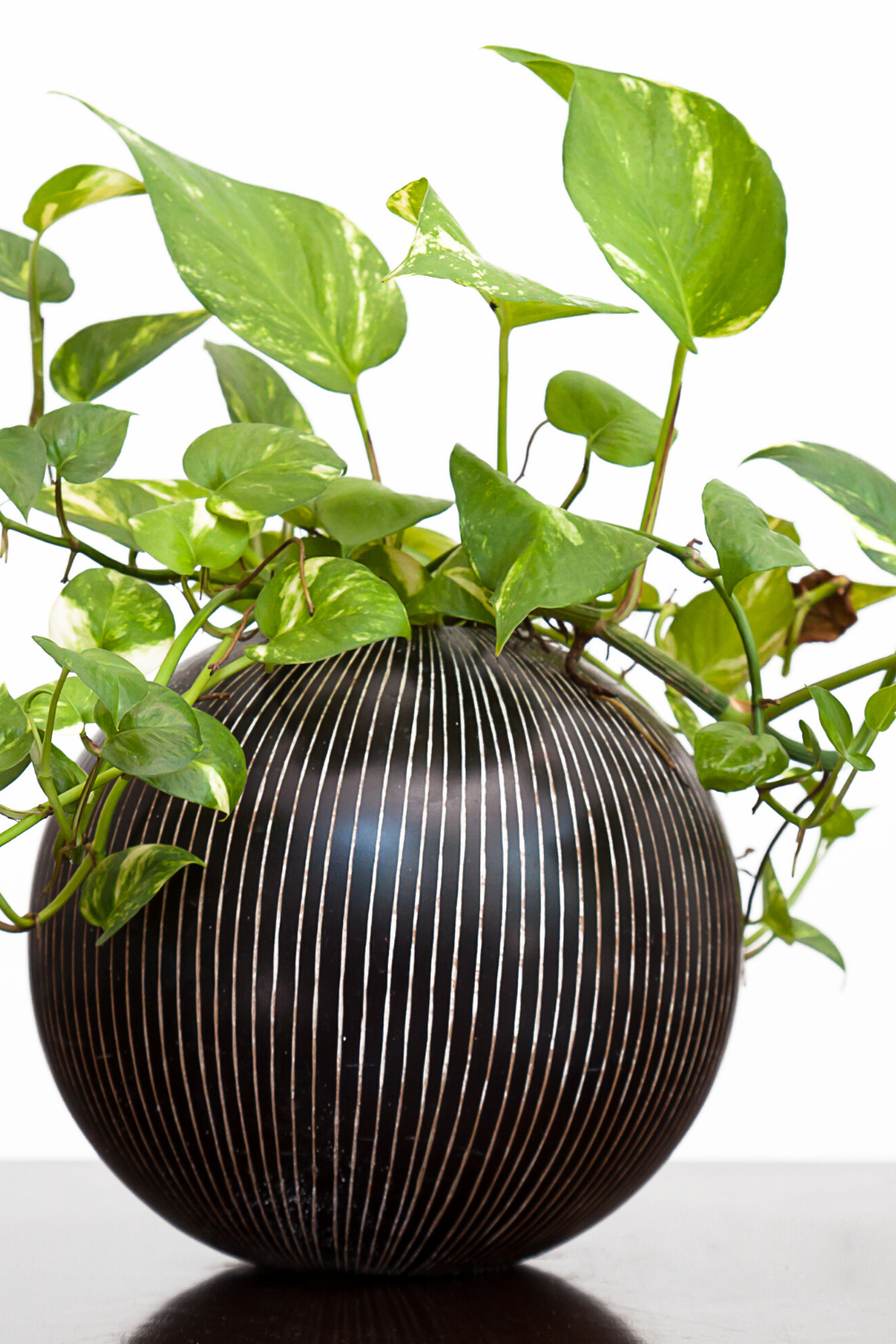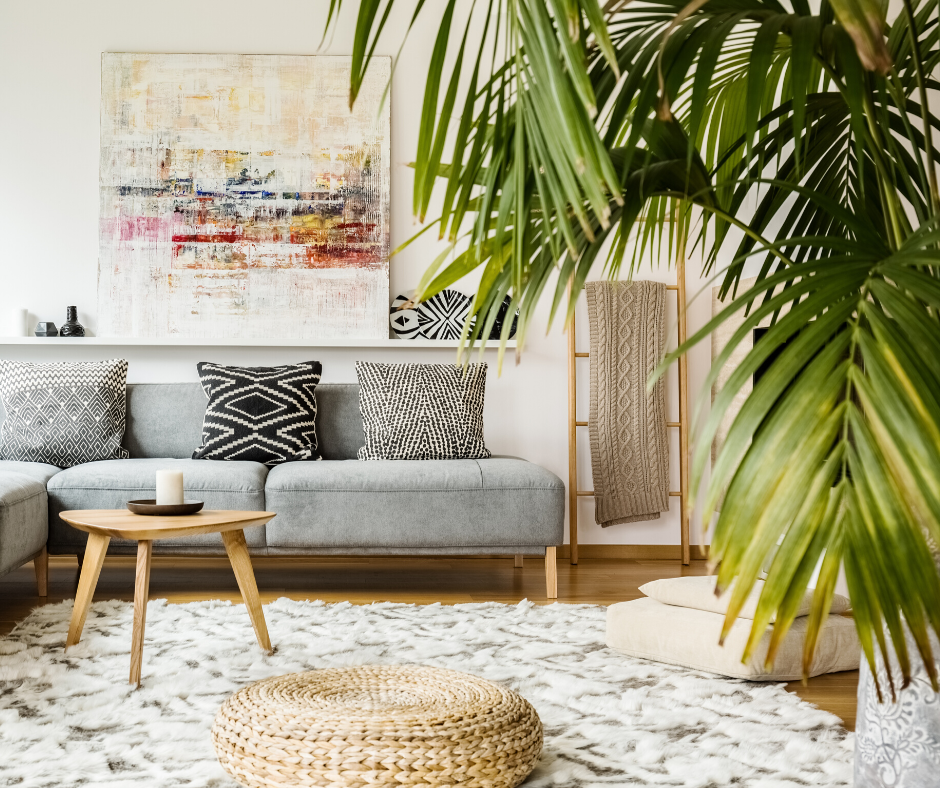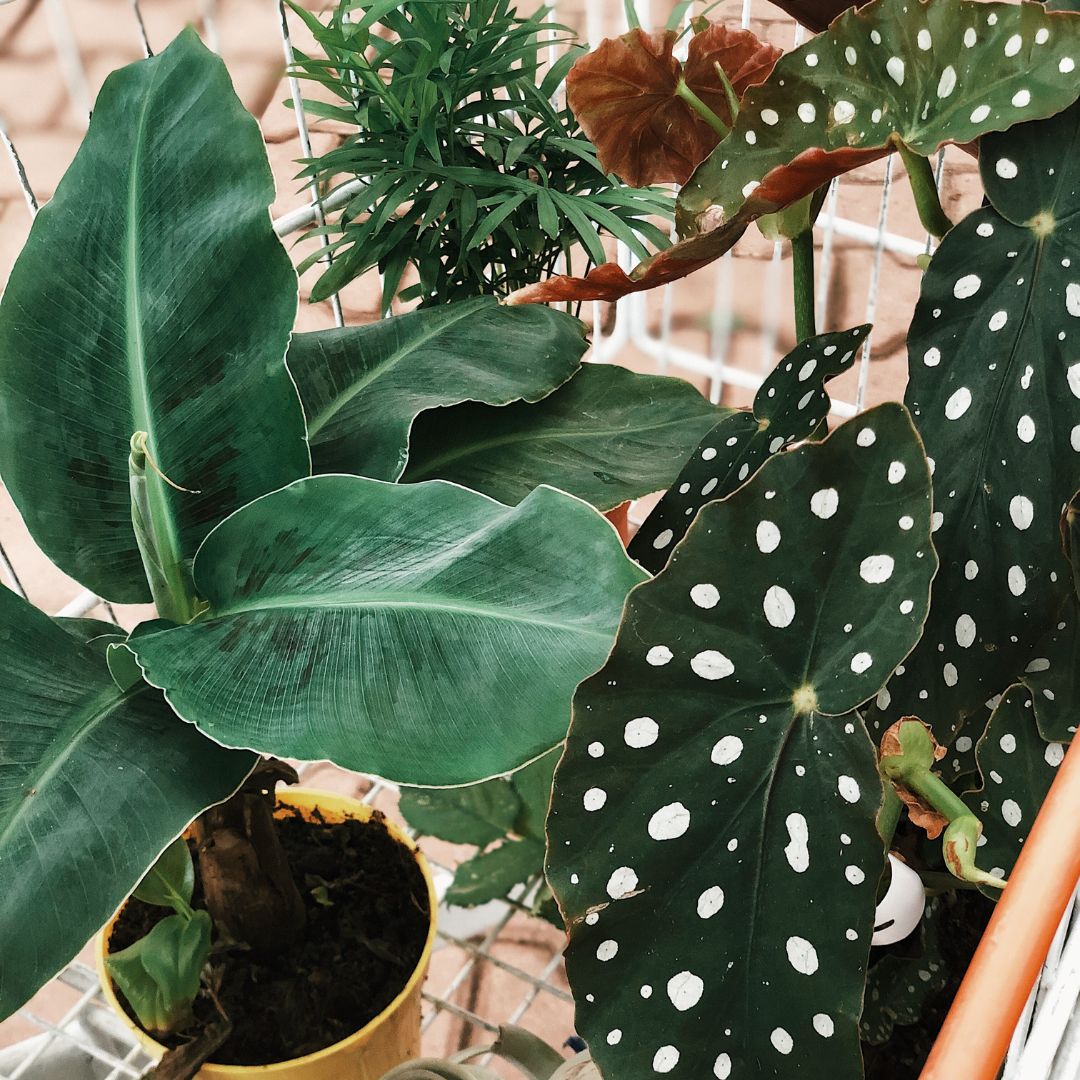
Thriving indoor plant life. It’s one of the most peaceful, relaxing hobbies. Taking care of indoor plants have not only relieved my anxiety and stress, but they are absolutely gorgeous to look at. Not to mention the health benefits of these beauties if taken care of properly. Yes, I too, was that gal that had a hard time keeping plants alive. Quickly I did some research to know which ones would thrive in low light because most of our homes never have any good, natural sunlight. It is important to have some lighting in the home to grow your indoor plants. There’s really no plant that has a tag slapped on it that states, ‘zero’ light. Most all purifying plants are ‘low’ light thrivers and that just means that you need one space in the house that has some good window light.
Indoor Plants Guide
For me, it’s our dining room. If you watch our IG stories, you see me posting mostly in that corner of the house. It’s the only real spot for them to thrive. The other thing I quickly learned is that they need to be semi grouped together. This helps them grow and feed off each other’s nutrients. BTW, you won’t find me using any fancy biology or chemistry terms because I’m not a book nerd. I just know what works, so I’ll explain the best way I know how; in plain English.
Plants release oxygen during the day in natural sunlight so, that is why it’s important to open the shades to allow them to receive indirect sunlight. Way back when I first started learning about plant life, I was researching natural ways to clean the air we breathe because a lot of the allergens came from inside the homes we lived in. My girls suffered immensely. And, it was then that I finally bought them a hypoallergenic dog. We went so many years missing out on animal love, and nutrients just because I wasn’t aware of the natural beauty in plants and shed free pets. Once I became familiar with purifying plants and hosted them inside the house for at least six months, I noticed a really big difference in the quality of air. Our home smelled naturally fresh and clean too.
Did You Know That The Inside Of Our Homes Is More Toxic Than The Pollution Outside?
It is a fact. That’s why it is so important to maintain the clean routines daily! I was reading an IG post last week that mentioned how they don’t believe in spot cleaning or everyday cleaning. Here’s my take; you cannot just leave crumbs all over the place, dust and pet hair flying throughout the living areas and allowing your kitchen sink to be harbored with bacteria. You have to clean these areas daily to prevent illnesses and allergens. I’m not a chemical product cleaner anymore and maybe that’s the difference with people who have different outlooks on these topics. When you go no tox, it’s such a relief in the way you keep your homes cleaned.
Here’s all you really need to know about keeping your indoor plants thriving especially if you’re a beginner :
- Don’t over water– I used to do this and quickly learned about root rot. Some of those plants were not able to be saved and I tried everything. It’s almost better to allow some indoor plants to dry out before watering. Like my string of banana plant. It’s super easy to care for when you educate yourself about the plant. I water my plants weekly in the summer and barely ever in the winter. During the winter months, allow them to dry out to keep them warm.
- But Give Them A Shower– I almost always allow the plant to dry out before giving them a good shower. What I mean by showering is placing the pot directly under a kitchen or shower hose and giving her a nice spray down. This is so good for the plant.
- Natural sunlight– You can keep your blinds facing downward to still get the light coming in without the need to open them fully. I do this when it’s really sunny because sometimes too much sun is not good. It will burn leaves quickly. Our plants get the benefits of the natural light in the afternoon and they only need a good few hours a day of low light.
- Re-potting– Plants only need to be repotted when they are outgrowing their current pot or if there’s just a really big root rot problem/bug infestation. Best to re-soil your babies for a healthier experience.
- Cut off dead leaves– I see this a lot in homes we have cleaned and it makes no sense. Clean the leaves and cut off the dead ones.

How To Properly Transfer Your Plant Into A New Pot
My eldest daughter is studying Horticulture and there are so many names for trees, plants and flowers. It’s amazing. I’m no pro. By all means, I just love the nature of plants. This helps me learn as well. Do not hesitate to share your tips on our posts, they’re more than welcome. I used to fill the soil almost near the top when I first starting re-potting them from their original containers and then I slowly started to realize that the bottom of the plant is all that needs to be covered.
You don’t necessarily have to change out the original plant container but I always do because none of them come in fancy pots, rarely. When you get your new plant home:
- Carefully remove from the original plastic container by grabbing at the base of the plant. Don’t pull from the top. Get a good grip on the bottom by digging your fingertips into the soil and slowly pulling.
- Pour some fresh new soil into the base of your new pot and by some, I mean very little. If the plant is too small for the pot but you really want to use it, simply pour soil halfway before arranging your plant in it. I do this all of the time with smaller plants going into bigger pots. The golden pothos is a perfect example of doing this.
- You don’t have to spread the roots as much as some recommend. In fact, I find some plants are most successful when barely stretching the roots. Typically before placing the plant into the soil of the new pot you’ll want to separate the bottom of the plant just a little by taking your fingers and loosening the bottom portion of the plant. Don’t overdo it. Just a little.
- Be sure to place your plant in the middle and top with some more soil, packing it into the pot. I use my hands….it’s just easier. Add some water ( not a lot ) to allow the plant to settle in.
Once your new plant is all set. place near some other plants with some natural sunlight. The location can mean everything when trying to care for new plants, so pay attention to how well they are doing each week.

THINGS YOU CAN REUSE AS POTS
1.) Old mugs
2.) Vintage ceramic pots/bowls
3.) Crock pots
4.) Rustic buckets
5.) Vases
6.) Stoneware
7.) Wicker baskets
8.) Small drawers from an old dresser
9.) Glassware (for propagation)
10.) Enamel pots and pans

6 Easy To Grow Purifying Plants
- The Golden Pothos has been my favorite because I have propagated the mama plant into several other plants by taking the roots from the mama plant and repotting into new pots to make several plants ( my way of secretly gaining more plants without buying any new ones because I’m at the max in our living space )
- The Dwarf Umbrella Tree is super easy to grow, and gets height; which is what I was craving when becoming a plant mom. I like big plants and I cannot lie
- String of bananas is my latest addition and you should allow them enough sunlight but dry them out before watering for the best growing results
- A philodendron is the way to go when first starting out because I purchased a small one at the Home Depot with little caring tips and it’s growing like crazy. You’ll find many varieties in our new shop
- Spider plants are awesome and photo prop worthy but I have yet to get one……next on my list…..I promise
- The aloe vera has been one of my favorites too! I haven’t done anything but cut off some to make homemade recipes with and it’s flourished ( from a grocery store )
When buying new plants just look to see if they appear healthy : no dried out leaves, dying, brown or holey spots. Some of my best plants came from the food market so, don’t listen to people who say never to purchase from there. Think GREEN in terms of indoor plants. A lot of colorful plants don’t survive in homes that don’t have the right air temp/quality or lighting. Stick with low light plants when in doubt. You are going to be the best plant mama, I just know it! Tell me what your latest purchase was and how you re-potted her into your new setting. I’d love to hear. Share on IG by using the hashtag #plantmama I think a lot of times we overthink cleaning, plants, healthier living in general and it’s such an easy thing to maintain if we just adapt to the lifestyle. Never give up……especially on plants, people and animals. Be creative and share your homes with us.
Enjoy! Stay tuned for more plant life posts here on the blog! Until next time, more coffee please.
A Few Things I Wish I Knew Before Becoming A #plantmama
- Not to root divide right away – I would come home from a nursery and immediately start ripping a big mama plant apart to divide the roots into several smaller plants. This isn’t normally a problem if the roots are well established but for many live houseplants they like to be left alone until they adapt to their new surroundings.
- Dormancy – I forget that some plants are still in dormancy and to be honest, I need to educate myself more about this because I’ve really bothered some poor plants and that’s not a good thing. Leave them babies alone. I’m currently learning that most perennial plants go into dormancy and they lose their leaves/stems, but that does not mean they are dead, just sleeping. They’ll grow back from the roots during the spring. I have tossed many plants not knowing about this. Ugh. How sad.
- Watering – Best not to create a watering schedule for your plants and just dip your finger into swirl around the soil a bit to see if moist or dry. If moist, leave alone. If dry, water. You can set a scheduled day to CHECK on them but don’t water if they don’t need to be. Mist them if they’re not completely dried out. The leaves need monthly cleaning at least.
- Bouncing around – I tend to move my plants from room to room because I stage a lot but if the plant doesn’t need to be relocated don’t. Once they get cozy and you see them doing well (give them a couple weeks) let them be.
- How much they tolerate – I wish I knew how much they could actually tolerate before calling it quits. I have tossed plants (way back in the beginning) thinking they were completely gone but the fact is, most plants survive a lot and can recoup if given the proper time and care.
I’m proud to say that today I am a successful plant rescuer and bring plants back to life now. What is something you can share to help our readers become plant mama thrive stars!?

Leave a Reply